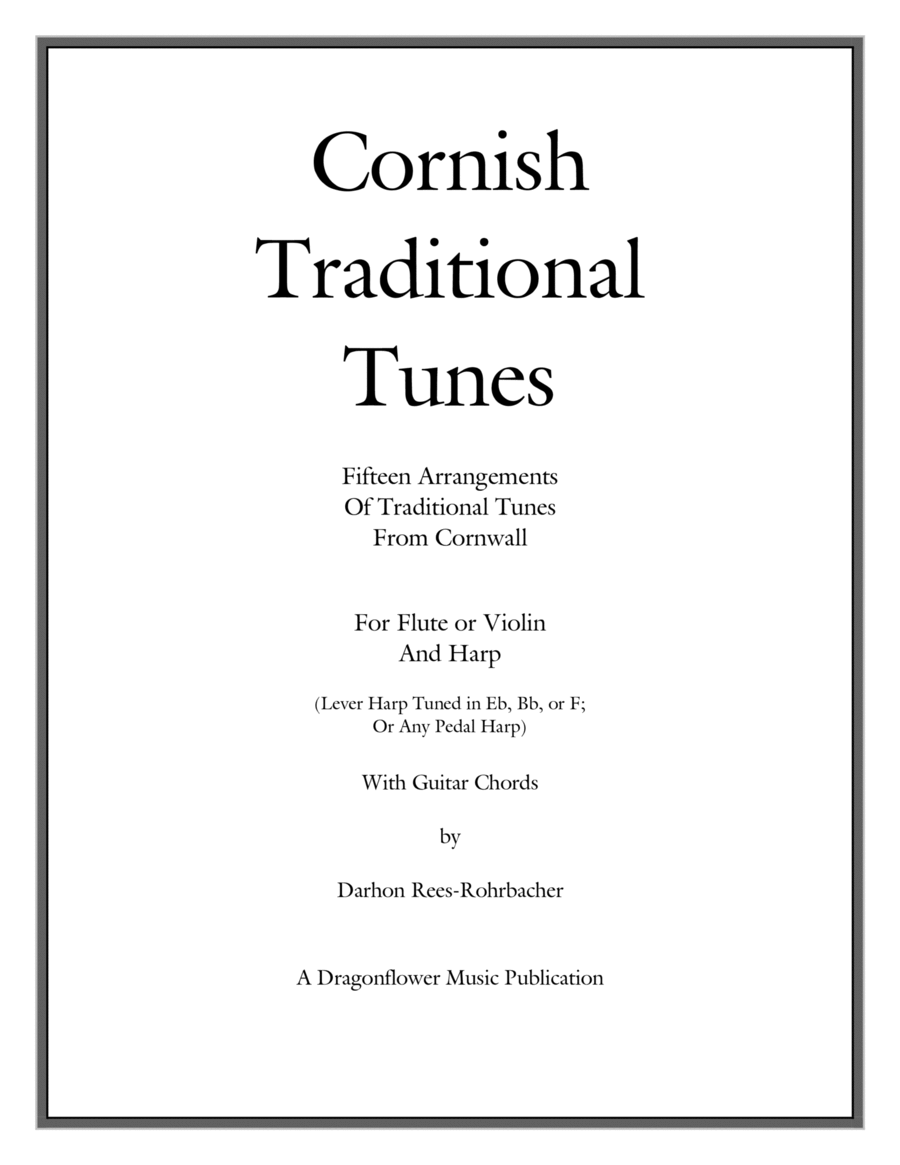Flute,Folk Harp,Instrumental Duet - Level 3 - Digital Download SKU: A0.1265481 Composed by Traditional Cornish. Arranged by Darhon Rees-Rohrbacher. Celtic,Folk,Historic,Irish,Multicultural,Traditional,World. 54 pages. Afghan Press Music for the Harp #858280. Published by Afghan Press Music for the Harp (A0.1265481). ALL HARPS INTERMEDIATE + MELODY INSTRUMENT â Fifteen Traditional Tunes from Cornwall arranged for Lever harps tuned in Eb, Bb or F, or any pedal harp. Â All of these arrangements fit within the 26-string range. Fifteen Arrangements of Traditional Tunes from Cornwall arranged for Lever harps tuned in Eb, Bb or F, or any pedal harp. Â Guitar chords included, with duo parts for Flute or Violin.These tunes have been placed in progressive key order to create a satisfying âCornish suiteâ that facilitates lever and pedal changes. All tunes were typeset to fix exactly on two facing pages to eliminate any page turns within a piece.Guitar chords are included so that the melody may be played by any C instrument, accompanied by chords on harp, lute, guitar, or keyboard. Also, the transcribed harp part can be played on any keyboard instrument with only minor adjustments. Only one song in this collection, #6, has any lever or pedal changes (B-flat and B-natural). Otherwise, there are only lever or pedal presets in preparation for the next song. Dynamic markings, fingerings, metronome markings, breath marks, and lever/pedal changes are provided throughout. However, the musicians should use whichever expressive markings and lever/pedal adjustments suit them, no matter what this book indicates! Due to space constraints, first and second endings were only indicated above the flute/violin part in the full score and dynamics only within the harp part; but these markings apply to both instruments. (However, all markings are indicated on the separate instrumental leaflet.) This entire book of arrangements can be played on a harp of only 26 strings (3.5 octaves), from low C to high G. Simply treat the C two octaves below middle C as the lowest C on your harp and adjust the octaves accordingly. Ignore any 8va indications and shorten any glissandos.Table of Contents:Helston Furry DanceThe Cottage Thatched With StrawThe White CockadeThe Loversâ TasksStrangerLimadieThe MarigoldLullabyWilly CoombeRouse, RouseThe BlackbirdCaptain PearseCome My LadsOn A May Morning So EarlyThe Siege Of St. MaloRelated products.
